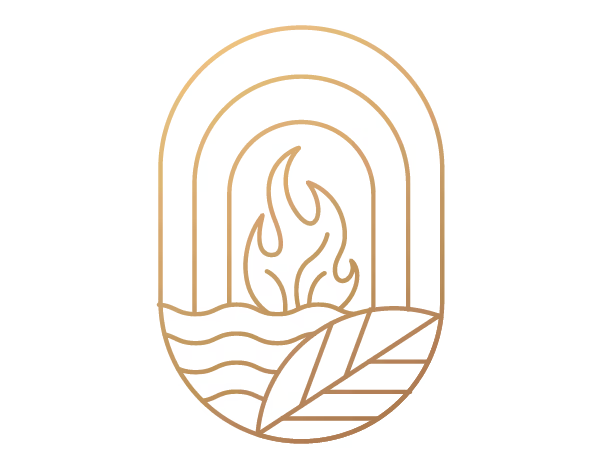Selecting an ultra-low temperature (ULT) freezer is no longer just about storage capacity and hitting -86°C. In today’s regulated, cost-sensitive, and innovation-driven lab environments, buyers must factor in long-term operational costs and the secondary market value of their equipment. With ENERGY STAR® Version 2.0 effective by mid-2025, CDC guidance updates, and specs like door-opening recovery and remote compliance alarms under scrutiny, making an informed purchase now can return major dividends five years down the road.
Why ULT Freezer Resale Value Matters
Labs and manufacturers face mounting pressure to modernize cold-chain assets for research, biologics, vaccine, or reference material storage. The wrong ULT spec can leave you locked into years of high energy bills, annoying alarms, unreliable systems, or a freezer nobody wants when you upgrade. In contrast, the right choice can mean a healthy resale (30–60% of MSRP at year five, if well maintained), lower OPEX, and minimal unplanned downtime.
Key Market Trends (2024–2025)
- ENERGY STAR 2.0 mandates normalized kWh/day at -75°C with rigorous 6-door-opening test cycles (source). Published volume-based MDEC (Maximum Daily Energy Consumption) numbers now let buyers compare real-world efficiency across brands.
- CDC toolkit (2024–2025) raises the bar for alarm/communication protocols (RS‑485, dry contacts, 4–20 mA), backup battery requirements, and evidence of proper warm-up/recovery profiles (CDC).
- Manufacturers now emphasize ambient rating/stability, quieter compressors (<50 dB), better door gaskets (longer service life), and rapid temperature recovery after openings (LabX).
Outdated Specs: The Bottom-Line Risks
Labs outgrowing outdated ULT freezers typically face:
- Sky-high OPEX: Some legacy models consume >22 kWh/day—double new ENERGY STAR standards.
- Poor serviceability: Non-modular compressors, proprietary controls, and hard-to-source gaskets reduce both uptime and resale.
- Alarm compliance gaps: Old units may lack integrated RS‑485 or dry contact alarm outputs, now recommended for regulatory documentation and insurance approval.
- Low resale demand: The second-hand market pays a premium for documented service records, recent firmware, and units with modern, replaceable components.
The Payback Timeline: How Smart Specs Boost Resale Value
Year 1–2: Immediate Energy & Compliance ROI
- Freezers meeting or beating ENERGY STAR 2.0’s MDEC requirements cut energy by 20–50% vs. 2017-era models.
- Units with CDC-aligned alarm trees are easier to qualify for grant funding, QA/QC audits, and agency partnerships.
Year 3–5: Resale-Driven Value
- Buyers want ENERGY STAR, CDC/21 CFR Part 11-ready alarms, volume-normalized MDEC, recent service.
- Well-maintained freezers with documented maintenance command 30–60% resale at year five. Units lacking these features are frequently parted out for scrap.
- Ongoing OPEX savings (up to $8,000–$15,000/lifecycle) make new models pay for themselves—particularly when local governments or recyclers pay a bounty for retiring power-hungry old units.
Bottom line: Buying for resale is about more than specs—it's about lifecycle documentation, compliance, and noise/serviceability that attracts next-generation buyers.
SPECS THAT MATTER FOR RESALE (AND OPERATIONAL EXCELLENCE)
1. Normalized Energy Use (kWh/day/L)
Shop for published MDEC figures at -75°C, not just -80°C or -86°C. ENERGY STAR 2.0 requires six door openings for lab realism.
- Look for: < 10 kWh/day for full-size (700–800L) ULT freezers, or < 0.015 kWh/L/day.
- Spec to ask: “What’s the kWh/L/day at -75°C, six-door-opening profile?”
2. Compliance-Ready Alarms & Remote Communications
Verify native RS‑485 (for BACnet/Modbus), dry contacts for relay integration, and battery-backed controller/alarm operation (>24 hrs during outage). CDC/WHO grants increasingly require documented alarm chain-of-custody and 21 CFR Part 11-friendly data logging.
- Ask: Does your unit integrate plug-and-play with your LIMS or building alarm system?
3. Serviceability & Component Life
Seek modular compressors (replaceable individually), long-life door gaskets (warranty 5+ years), and robust firmware that is field-upgradeable. Short warm-up/warm-down recovery curves minimize compliance drift after door openings.
- Request: Predicted door gasket life (cycles/hours), compressor MTBF (Mean Time Between Failures), and local service maps.
4. Facility Power Matching
Check models against your power availability: some ULTs require dedicated lines or have high inrush. Newer units allow for 120V or 220V compatibility—with soft-start mitigating facility disruptions.
- Ask: Ambient derating vs. your climate? Power quality data sheets?
5. Battery-Backed Alarm & Data Retention
Resale and regulators want proof your freezer logs temp/excursion data and alarms with at least 48 hours of battery backup during outages.
Avoiding Value-Killing Mistakes
- Ignoring ambient rating: Your resale market is national/global; poor ambient performance limits buyer pool.
- Failing to track hours/service logs: No log, no premium. Modern buyers want digital records.
- Missing the new comms protocols: Without RS‑485, Modbus, or dry contacts, your freezer is “off-network” and worth less.
- Neglecting battery/UPS for alarms and logs: A cheap battery now is a 20% hit to resale later.
Product Plug: The Next-Gen ULT Freezer
For lab leaders who refuse to compromise, we recommend the Ai RapidChill 26 CF -86°C Ultra-Low Temp Upright Freezer UL 120V . This ENERGY STAR-ready model features:
- Volume-normalized MDEC and low daily kWh use
- Native RS‑485, extensive alarm tree, and 48-hour battery backup
- Modular, serviceable build with parts supply
- Near-silent compressor and robust, deep-vacuum seal gaskets
- UL certified and compliant with US, Canadian, and EU standards
It’s also in strong demand on the secondary market—Urth & Fyre sources such units, offers commissioning support, buy-back, and preventive maintenance programs, and clearly documents every service event for future resale.
Implementation Checklist: Buy for Both Today and Tomorrow
- Insist on ENERGY STAR 2.0-compliant daily kWh/L/door opening specs
- Demand CDC/ISO alarm and data logging compliance
- Require full documentation of service and hours
- Select modular, repairable units with known parts supply
- Keep every service/PM log for resale value
Ready to future-proof your lab’s cold chain and capture top resale value? Explore ULT freezer listings and consulting options at Urth & Fyre or inquire about our financing and buy-back packages.
Relevant reading:
- ENERGY STAR Version 2.0 Laboratory Grade Freezers (spec)
- CDC Vaccine Storage & Handling Toolkit
- Best Practices: Ultra-Low Freezer Management
- LabX: Best ULT Freezers of 2025
Stay ahead of compliance—and maximize the return for every stage of your cold storage assets with Urth & Fyre.



